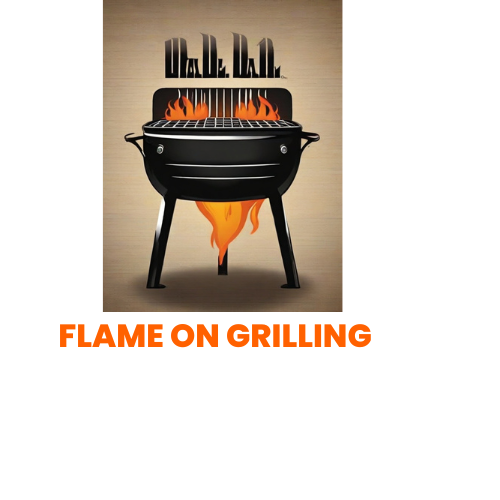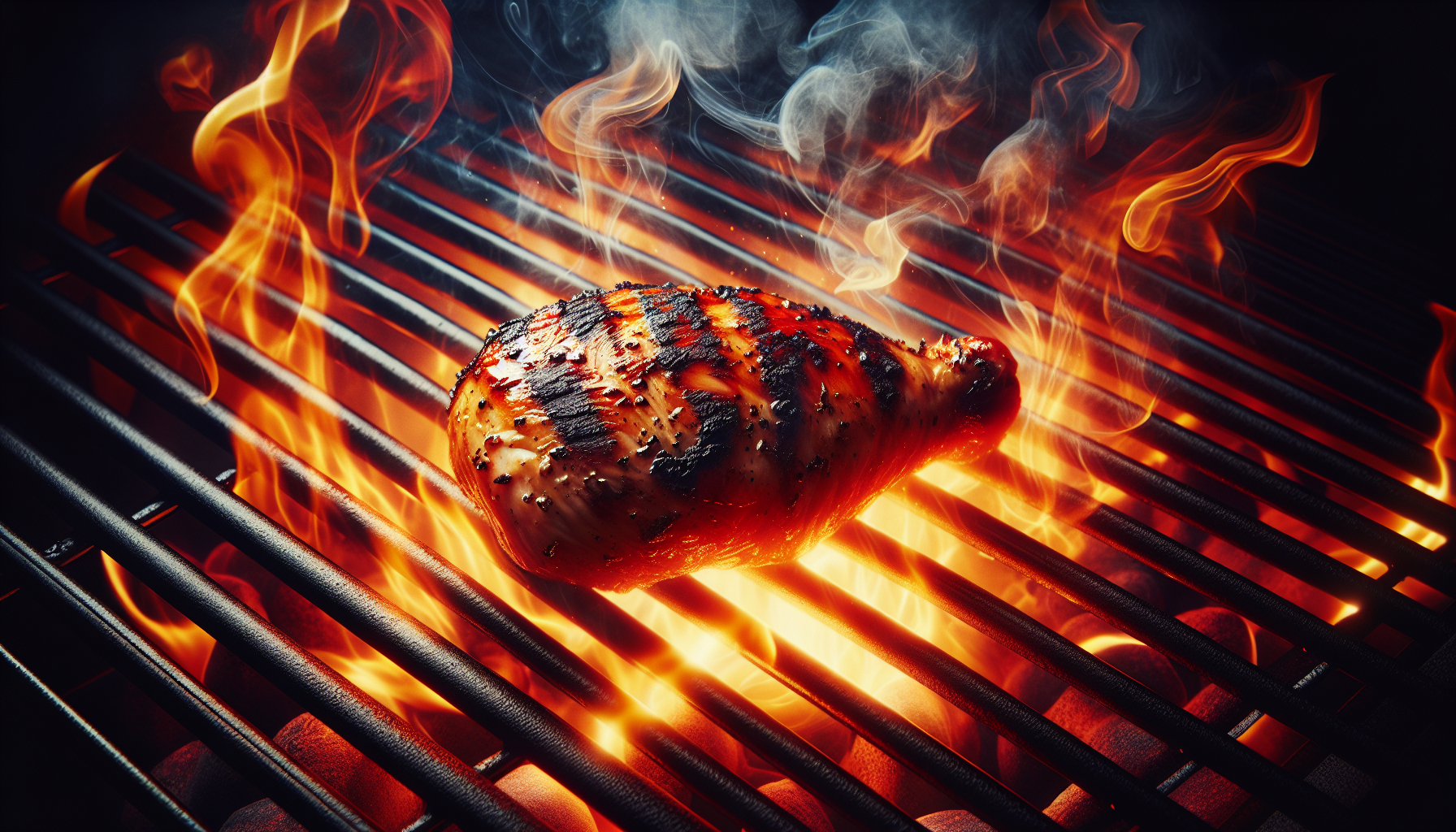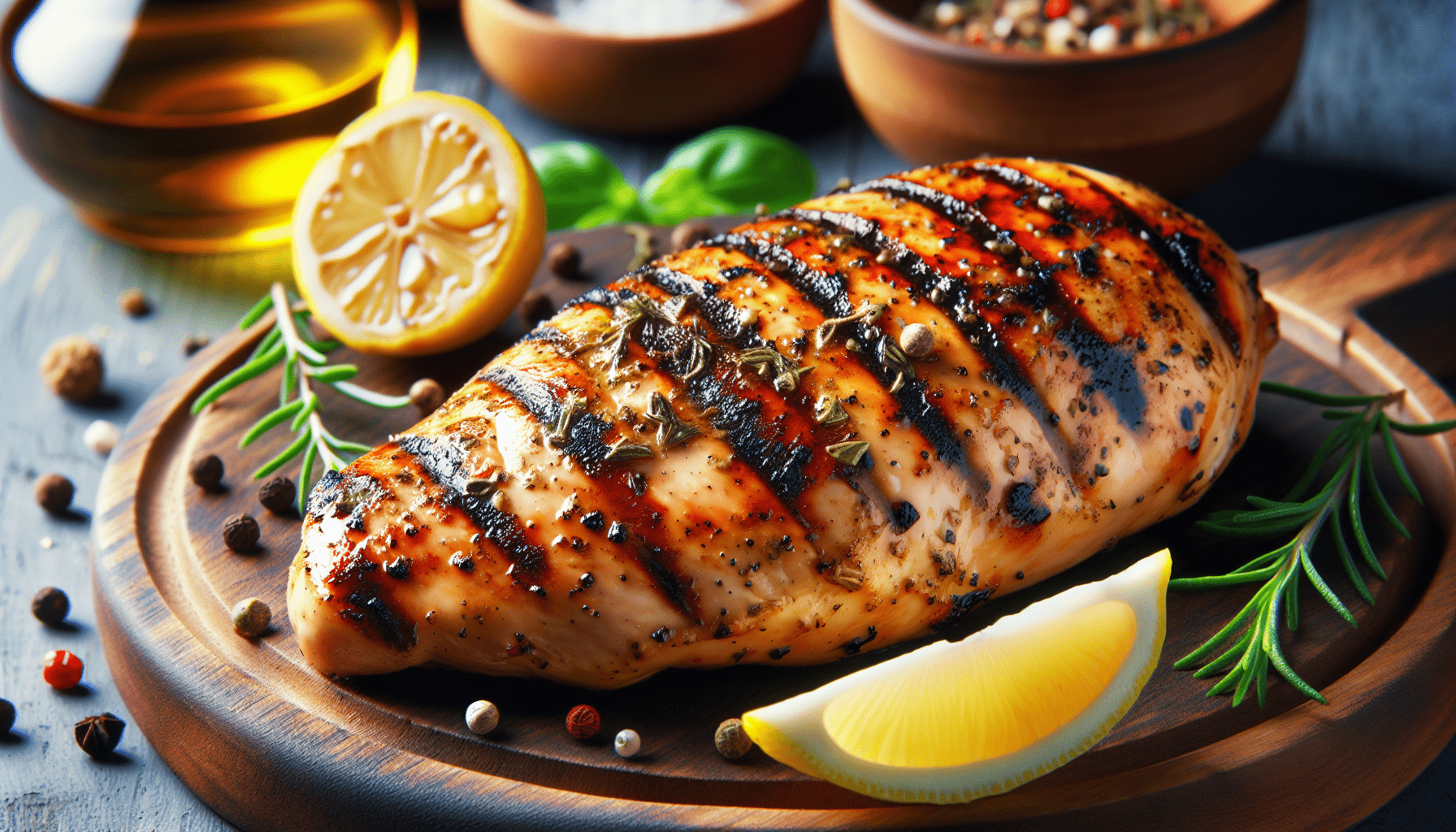Grilling chicken to perfection requires just the right amount of heat, but figuring out the ideal temperature may leave you scratching your head. In this article, we’ll uncover the secrets to achieving juicy, flavorful grilled chicken by exploring the perfect grill temperature. Whether you’re a seasoned griller or a newbie, understanding the ideal heat range for grilling chicken will ensure your next barbecue is a sizzling success. So, let’s dive in and discover the optimal temperature for grilling chicken to perfection!
Choosing the Right Temperature
Grilling chicken is a delicious and popular way to cook this versatile meat. But when it comes to grilling chicken, choosing the right temperature is crucial to ensure that you achieve a perfectly cooked and juicy result. Here are a few key factors to consider when determining the ideal temperature for grilling chicken.
Consider the Type of Chicken
The first thing you should take into account when deciding on the grilling temperature is the type of chicken you are cooking. Different cuts of chicken require different cooking techniques and temperatures. For example, boneless chicken breasts cook quickly and evenly at higher temperatures, while bone-in chicken thighs benefit from a slower and lower heat to ensure thorough cooking without charring the outside.
Refer to the Recipe
Another helpful guide in choosing the appropriate grilling temperature for chicken is to refer to the recipe you are using. Many recipes will provide specific instructions regarding the grill temperature to ensure optimal results. Following the recipe’s guidelines is a great way to ensure that you achieve the desired texture and flavor.
Use a Meat Thermometer
While considering the type of chicken and referring to the recipe are essential steps, using a meat thermometer is the most foolproof way to ensure that your chicken is cooked to perfection. Different cuts of chicken have different recommended internal temperatures to ensure both safety and juiciness. By using a meat thermometer to check the internal temperature, you can avoid the risk of undercooked or overcooked chicken.
High Heat Grilling
High heat grilling is a popular method for cooking chicken, and it offers several benefits. When grilling at high temperatures, the chicken cooks quickly, resulting in a crisp and caramelized exterior while retaining its moisture.
Benefits of High Heat Grilling
Grilling chicken at high heat allows for the development of a delightful charred crust that adds both flavor and visual appeal. The high heat also helps to seal in the juices, keeping the meat moist and tender. Additionally, high heat grilling is great for achieving those picturesque grill marks that add a professional touch to your dish.
Recommended Temperatures for High Heat Grilling
For boneless, skinless chicken breasts, a grill temperature of around 450°F (232°C) is ideal for achieving a perfectly cooked result. Cook each side for approximately 6-8 minutes until the internal temperature reaches 165°F (74°C).
Medium Heat Grilling
If you prefer a more moderate approach to grilling your chicken, medium heat grilling may be the right choice for you. Cooking at medium heat allows for a gentle and even cooking process that produces a juicy and flavorful chicken.
Benefits of Medium Heat Grilling
One of the significant advantages of grilling chicken at a medium heat is that it reduces the risk of charring the exterior while ensuring that the meat is cooked through. This method provides a nice balance between the speed of high heat grilling and the caution of low heat grilling. It allows the natural flavors of the chicken to shine through while still achieving a nice caramelization on the outside.
Recommended Temperatures for Medium Heat Grilling
For bone-in chicken thighs or drumsticks, a grill temperature between 375°F (190°C) to 400°F (204°C) is recommended. Cook each side for approximately 10-12 minutes until the internal temperature reaches 165°F (74°C).
Low and Indirect Heat Grilling
Low and indirect heat grilling is a technique that involves cooking chicken away from the direct flames. This method is excellent for larger pieces of chicken or when you want to infuse flavors slowly.
Benefits of Low and Indirect Heat Grilling
One of the main advantages of low and indirect heat grilling is that it allows for a slower and more controlled cooking process. This helps to preserve the moisture within the chicken, resulting in a tender and succulent meat. Additionally, it gives you the opportunity to experiment with adding smoky flavors by using wood chips or adding aromatic ingredients to the grill.
Recommended Temperatures for Low and Indirect Heat Grilling
For whole chickens or bone-in chicken pieces, a grill temperature of around 325°F (163°C) is recommended. This lower temperature allows the chicken to cook slowly and evenly without the risk of burning. Cook the chicken for approximately 20 minutes per pound until the internal temperature reaches 165°F (74°C).
Preheating the Grill
Preheating the grill is an essential step to ensure that your chicken cooks evenly and attains that irresistible grilled flavor.
Ensure Proper Preheating
Before placing the chicken on the grill, make sure to preheat it for at least 10-15 minutes. This will allow the grates to heat up evenly, preventing the chicken from sticking to them and ensuring that the heat is distributed uniformly across the grilling surface. Proper preheating also helps to sear the chicken quickly, locking in the moisture and flavor.
Ideal Preheating Times for Different Temperatures
For high heat grilling, preheat the grill to approximately 450°F (232°C). This temperature will give the chicken a perfect sear and crisp exterior. For medium heat grilling, preheat the grill to about 375°F (190°C) to 400°F (204°C), while for low and indirect heat grilling, preheat it to around 325°F (163°C). Adjusting the preheating times accordingly will ensure that you start grilling your chicken at the right temperature.
Tips for Grilling Chicken
Grilling chicken can be both exciting and challenging. To help you achieve the best possible results, here are a few tips to keep in mind.
Oil the Grill Grates
Before placing the chicken on the grill, make sure to oil the grates generously. This will prevent the chicken from sticking and tearing, ensuring that it cooks evenly and retains its juiciness. Use a pair of tongs and a folded paper towel soaked in vegetable oil to lightly oil the grates before grilling.
Control the Flames
While a little charring on the chicken can add flavor, excessive flames can result in burnt or unevenly cooked chicken. To control the flames, keep a spray bottle filled with water close by. If the flames flare up, use the spray bottle to gently extinguish them, ensuring that the chicken cooks evenly without charring.
Monitor the Chicken’s Internal Temperature
To ensure that your chicken is cooked to perfection, invest in a reliable meat thermometer. Insert the thermometer into the thickest part of the chicken, avoiding contact with the bone. For boneless chicken, the internal temperature should reach 165°F (74°C), while bone-in cuts should also reach the same temperature to ensure they are fully cooked and safe to eat.
Troubleshooting Common Issues
Even with the best preparation and attention, it is possible to encounter common issues when grilling chicken. Here’s how to troubleshoot some of the most common ones.
Dry and Overcooked Chicken
If your chicken ends up dry and overcooked, it may be due to grilling at excessively high temperatures or leaving it on the grill for too long. To avoid this, ensure that you are grilling at the appropriate temperature for the cut of chicken you are cooking. Use a meat thermometer to monitor the internal temperature and remove the chicken from the grill once it reaches the recommended temperature. Remember, practice and experience will help you perfect your grilling technique over time!
Undercooked Chicken
Undercooked chicken can pose health risks, so it’s crucial to ensure thorough cooking. If you find that your chicken is undercooked, it’s usually because the grill temperature was too low or the chicken pieces were too large or not uniformly sized. To prevent this, follow the recommended grilling temperatures and consider cutting larger pieces into smaller portions to ensure even cooking.
Unevenly Cooked Chicken
Unevenly cooked chicken can be a result of several factors, including uneven grill heat distribution or not properly preheating the grill. To address this issue, ensure the grill is properly preheated and adjust the grill’s flame or heat settings to achieve even heat distribution. Also, consider rotating the chicken periodically while grilling to promote even cooking on all sides.
Grilling Different Cuts of Chicken
Different cuts of chicken require different grilling techniques to achieve the best results. Here are some useful tips for grilling common cuts of chicken.
Breast
Chicken breast, especially boneless and skinless, is a lean cut that can dry out quickly if not cooked properly. To grill chicken breast, preheat the grill to high heat and cook for approximately 6-8 minutes per side or until the internal temperature reaches 165°F (74°C). Consider using a marinade or seasoning rub to enhance the flavor and retain the moisture.
Thighs
Chicken thighs are a flavorful and forgiving cut that benefits from slower cooking methods. Preheat the grill to medium heat and cook bone-in chicken thighs for approximately 10-12 minutes per side until the internal temperature reaches 165°F (74°C). This longer cooking time allows the chicken thighs to become tender and juicy while developing a tasty brown crust.
Drumsticks
Drumsticks are a favorite among many chicken lovers due to their juicy meat and convenient handheld shape. To grill drumsticks, preheat the grill to medium heat and cook for approximately 12-15 minutes per side until the internal temperature reaches 165°F (74°C). The slightly longer cooking time ensures a fully cooked drumstick with a crispy skin and succulent meat.
Wings
Chicken wings are a popular appetizer or party food, and grilling them adds a delightful smoky flavor. To grill chicken wings, preheat the grill to medium heat and cook for approximately 10-12 minutes per side until the internal temperature reaches 165°F (74°C). If desired, you can also separate the wings into drumettes and wingettes for more even cooking and easier handling.
Additional Considerations
There are a few additional factors to consider when grilling chicken that can enhance your experience and results.
Marinades and Seasonings
Marinating the chicken before grilling can impart additional flavor and help tenderize the meat. Whether it’s a simple marinade of olive oil, lemon juice, and herbs or a more complex blend of spices and sauces, marinating can elevate the taste of your grilled chicken. Additionally, don’t forget to season the chicken with salt and pepper just before grilling to enhance the natural flavors.
Grilling Bone-in vs. Boneless Chicken
Both bone-in and boneless chicken cuts have their advantages. Bone-in chicken generally provides more flavor and retains moisture better, while boneless chicken offers convenience and quicker cooking times. Consider your preferences and the cooking method you plan to use when choosing between bone-in and boneless cuts.
Resting the Chicken Before Serving
After removing the chicken from the grill, it’s essential to let it rest for a few minutes before serving. Resting allows the juices to redistribute within the meat, resulting in a more tender and moist end product. Simply tent the grilled chicken with foil and let it rest for 5-10 minutes before slicing or serving.
Conclusion
Grilling chicken is a fantastic way to enjoy this versatile meat, and choosing the right temperature is crucial to achieve the best results. Consider factors like the type of chicken, refer to recipes, and use a meat thermometer to ensure proper cooking. High heat grilling provides a charred exterior and juicy interior, medium heat grilling balances flavor and tenderness, and low and indirect heat grilling infuses smoky flavors. Preheating the grill and following tips like oiling the grates and monitoring the chicken’s internal temperature will help you achieve delicious grilled chicken every time. Troubleshooting common issues, grilling different cuts of chicken, and considering additional factors like marinades and resting the chicken will further enhance your grilling experience. So, fire up the grill and enjoy the delightful flavors of perfectly grilled chicken!




